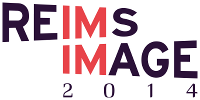Natalya Tatarchuk is an Engineering Architect currently working on state-of-the art cross-platform next-gen rendering engine and game graphics for the upcoming Bungie game Destiny. Previously she was a graphics software architect and a project lead in the Game Computing Application Group at AMD Graphics Products Group (Office of the CTO) where she pushed parallel computing boundaries investigating innovative real-time graphics techniques. Additionally, she had been the lead of ATI’s demo team creating the innovative interactive renderings and the lead for the tools group at ATI Research. She has published papers and articles in various computer graphics conferences and technical book series, and has presented her work at graphics and game developer conferences worldwide.
Applied graphics research for video games: solving real-world problems under real-world constraints (Lessons from Destiny‘s development)
In video games of today, real-time graphics are often a crucial aspect of engaging the player. Detailed and beautifully rendered worlds help create immersive environments for the player to participate in. As the game developers continue to improve the real-time rendering techniques, extracting the most out of the current set of console capabilities, to give the players the best experience possible, video game developers benefit by leaning strongly on applied graphics research to help this process. This talk will cover the practical considerations faced by video game developers, with respect to hardware constraints, production considerations, including budget, resource and time constraints.
In this talk, we will focus on how graphics research can be applied to the real-world constraints of video games, drawing on the lessons of solving real-world problems under real-world constraints and analyzing patterns learned throughout Destiny‘s development. We will cover several examples of Destiny‘s applied research and their integration into the shipping games engine. We will discuss examples of techniques that were successfully integrated into the shipping game, as well as analyze additional originally promising methods that ultimately failed to work under the conditions of real hardware constraints or the content creation needs of a shipping title. We will cover in depth what it means to ship a cross-platform, scalable rendering engine with today’s rendering expectations, and the corresponding important considerations for applied real-time research. Real-world hardware constraints with respect to graphics techniques will be analyzed. We will discuss the content creation implications that are important for graphics algorithms as well as current trends for game worlds creation. Lastly, we will discuss some of the remaining challenges faced by the game developers going forward in hopes of spurring more applied research for that domain.
